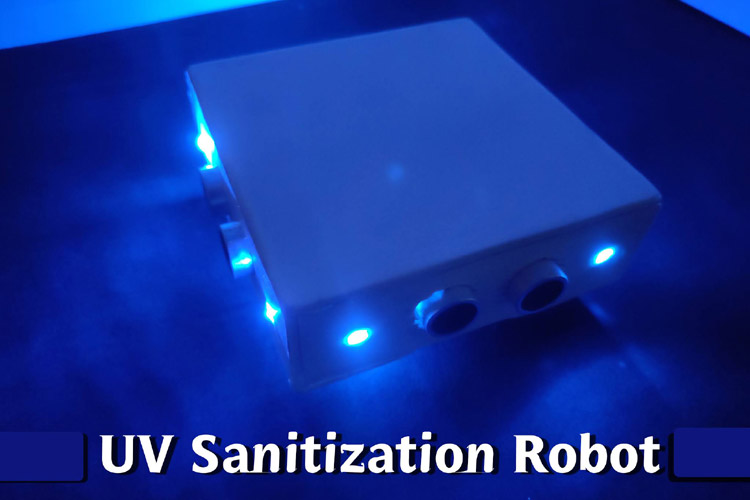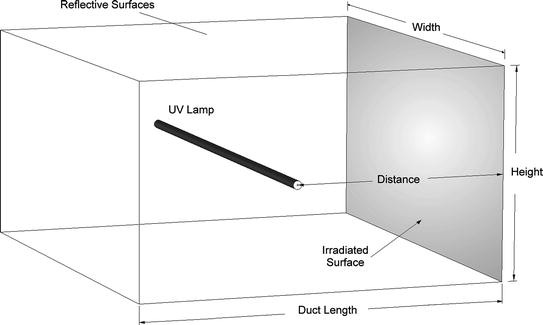Much UVC Light: A Game-Changer in the Battle Versus Airborne Pathogens
In the ever-evolving battle against airborne pathogens, the development of much UVC light has actually sparked considerable interest and capacity. This ingenious innovation, using a certain series of ultraviolet light, holds the pledge of transforming just how we deal with the spread of damaging bacteria in various settings. Its prospective applications and unique homes have gathered attention from researchers, scientists, and public health and wellness specialists alike. What precisely is far UVC light, and exactly how does it function? In this discussion, we will delve right into the scientific research behind this game-changing modern technology, explore its benefits, and analyze its future effects in the continuous fight versus airborne microorganisms.
The Scientific Research Behind Far UVC Light
The clinical concepts underlying using Far UVC light as a potential option for combating air-borne virus are both promising and elaborate. Far UVC light describes a particular variety of ultraviolet (UV) light wavelengths, typically between 207 and 222 nanometers, which have been found to efficiently eliminate or inactivate microbes such as viruses and bacteria. Unlike traditional UVC light, which has a much shorter wavelength and is recognized for its germicidal residential or commercial properties yet can additionally hurt human skin and eyes, Far UVC light has actually been revealed to be safe for human exposure.
The vital device behind the efficiency of Far UVC light depend on its ability to pass through and destroy the hereditary material of microorganisms, including their DNA and RNA. When exposed to Far UVC light, the hereditary product goes through a procedure called photodimerization, where adjacent bases in the DNA or RNA particle bind together, preventing duplication and rendering the bacterium incapable to create or recreate infection.

Just How Far UVC Light Functions
Much UVC light operates by utilizing specific ultraviolet wavelengths to successfully counteract bacteria and prevent their duplication, making it an appealing option for combating air-borne pathogens. Unlike standard UVC light, which is hazardous to human skin and eyes, much UVC light has shorter wavelengths, typically in the variety of 207 to 222 nanometers (nm), that do not penetrate the external layer of the skin or the tear layer of the eye. This makes it secure for continual human direct exposure, while still being lethal to viruses and bacteria.
The efficiency of much UVC light hinge on its capability to permeate and ruin the DNA and RNA of microbes. When subjected to much UVC light, the hereditary product of these pathogens is damaged, making them incapable to reproduce and contaminate cells. Furthermore, researches have actually shown that far UVC light can properly suspend airborne viruses, such as flu, measles, and coronaviruses, including SARS-CoV-2, the infection in charge of COVID-19.
Additionally, much UVC light is also capable of sanitizing surface areas and objects in an enclosed space. By setting up much UVC lighting fixtures or utilizing portable much UVC light tools, it is feasible to continuously sanitize the air and surface areas, lowering the danger of airborne transmission of pathogens.
Benefits of Far UVC Light
Making use of much UVC light deals a variety of substantial benefits in combating airborne virus and ensuring a more secure setting for continuous human exposure. Among the key benefits of far UVC light is its ability to effectively neutralize different kinds of hazardous microorganisms, infections, and fungis without creating injury to human beings. Unlike traditional UV light, which can be harmful to human skin and eyes, far UVC light look at this website has a shorter wavelength that permits it to target and ruin virus while positioning very little danger to human health.

Additionally, far UVC light is much more secure for the environment contrasted to typical disinfection techniques. Chemical disinfectants typically consist of unsafe active ingredients that can have unfavorable influence on the environment. Far UVC light, on the various other hand, does not generate any kind of hazardous by-products or residues, making it an extra eco-friendly and sustainable service.
Applications of Far UVC Light
One of the essential uses for much UVC light is in the field of air filtration web and disinfection. Far UVC light has actually verified to be effective in getting rid of air-borne virus such as fungi, germs, and infections. This innovation works by giving off a specific wavelength of light that can penetrating the outer layers of microbes and damaging their DNA, rendering them inactive and not able to reproduce. Unlike traditional UV light, much UVC light is secure for human exposure, making it ideal for constant use in public spaces such as hospitals, colleges, and workplaces.
An additional application of far UVC light remains in the medical care sector. It can be utilized to read review decontaminate medical facility spaces, operating theaters, and medical equipment, decreasing the danger of healthcare-associated infections. Furthermore, much UVC light can be included into heating and cooling systems to cleanse the air flowing in structures, giving an added layer of protection against air-borne microorganisms.
Furthermore, much UVC light can be made use of in the food industry to avoid foodborne health problems. It can be utilized to disinfect food handling facilities, eliminating germs and various other bacteria that might pollute food items.
Future Effects of Far UVC Light
The possible future applications of much UVC light are vast and hold guarantee for different sectors and industries. Among the crucial locations where much UVC light could have a significant effect remains in healthcare setups. Centers and health centers might use much UVC light to disinfect person rooms, operating theaters, and waiting locations, lowering the threat of healthcare-associated infections - far-uvc. This can potentially cause enhanced person results and lowered medical care costs.
In addition, using far UVC light in public spaces such as flight terminals, train terminals, and shopping center might aid manage the spread of airborne microorganisms. By constantly disinfecting these areas, the risk of transmission could be substantially reduced, supplying a much safer environment for individuals.
Another prospective application of far UVC light is in the food sector. Far UVC light can be utilized to disinfect cooking surfaces, product packaging materials, and storage locations. This can aid prevent the contamination of food and lower the occurrence of foodborne illnesses.
In addition, far UVC light can be used in HVAC systems to decontaminate the air flowing in buildings. This might be particularly helpful in congested areas such as theaters, workplaces, and colleges, where the threat of airborne transmission is higher.
Conclusion
Finally, much UVC light has actually become a game-changer in the battle versus air-borne microorganisms. Its unique buildings and capability to safely kill germs and infections make it a promising solution for different applications. From public rooms to medical care settings, much UVC light offers many advantages in minimizing the transmission of conditions. With additional study and growth, its widespread implementation might have significant ramifications for the future of infection control.
Far UVC light refers to a specific range of ultraviolet (UV) light wavelengths, usually between 207 and 222 nanometers, which have been found to properly eliminate or inactivate microorganisms such as viruses and bacteria. far-uvc. Unlike standard UVC light, which has a much shorter wavelength and is understood for its germicidal buildings however can additionally harm human skin and eyes, Far UVC light has been shown to be safe for human exposure
Unlike conventional UVC light, which is unsafe to human skin and eyes, far UVC light has much shorter wavelengths, generally in the variety of 207 to 222 nanometers (nm), that do not penetrate the outer layer of the skin or the tear layer of the eye. Unlike standard UV light, which can be hazardous to human skin and eyes, much UVC light has a shorter wavelength that permits it to target and ruin virus while positioning very little risk to human health.
Unlike traditional UV light, far UVC light is risk-free for human exposure, making it ideal for continuous usage in public areas such as medical facilities, schools, and offices.